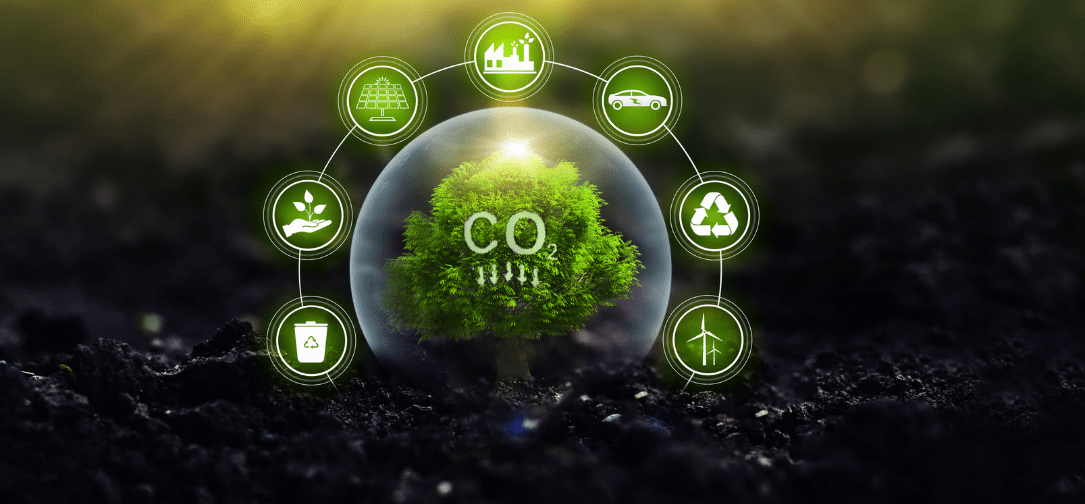In this age of innovation and progress, technology is not only advancing our lives but also helping us tackle one of the biggest challenges facing humanity – global warming. As carbon emissions continue to rise and wreak havoc on our planet, it becomes increasingly crucial for us to find effective solutions that can remove carbon dioxide from the atmosphere. Enter carbon removal technologies, a game-changing advancement in the fight against climate change.
In this article, we will explore how technological innovations in carbon removal solutions are paving the way towards a greener and more sustainable future. We’ll delve into different types of carbon removal technologies, discuss their benefits as well as limitations, and envision what lies ahead for this promising field.
The Role of Technological Innovations in Carbon Removal Solutions
Technological innovations have played a crucial role in addressing the urgent need to combat global warming by developing effective carbon removal solutions. These advancements have revolutionized the way we approach the reduction of carbon emissions and offer promising possibilities for a more sustainable future.
One of the key areas where technology has made significant contributions is in the development of carbon capture and storage (CCS) systems. These innovative solutions involve capturing carbon dioxide (CO2) emissions from industrial processes or power plants and permanently storing them underground. CCS technologies help mitigate greenhouse gas emissions, preventing their release into the atmosphere and thereby reducing their impact on global warming.
Another notable technological innovation in carbon removal is direct air capture (DAC). This approach involves extracting CO2 directly from ambient air using specialized filters or chemical reactions. The captured CO2 can then be either stored underground or used in various applications such as producing renewable fuels or building materials, further promoting sustainability.
Furthermore, advancements in bioenergy with carbon capture and storage (BECCS) have gained traction as an effective method for removing CO2 from the atmosphere while simultaneously generating renewable energy. BECCS combines biomass energy production with CCS technology, allowing for negative emissions by removing more CO2 than it emits during combustion.
In addition to these specific technologies, digitalization has also enhanced our ability to monitor and manage carbon removal processes efficiently. Data-driven analytics enable us to optimize operations, identify potential inefficiencies, and make informed decisions regarding resource allocation.
Technological innovations in carbon removal solutions are instrumental in combating global warming by offering efficient ways to reduce atmospheric CO2 levels effectively. By harnessing these groundbreaking techniques alongside sustainable practices and policies, we can work towards mitigating climate change’s adverse effects on our planet’s health and well-being
Types of Carbon Removal Technologies
- Direct Air Capture (DAC): DAC technology involves capturing carbon dioxide directly from the air and then storing or utilizing it in various ways. This can be done using chemical processes or through the use of special materials that absorb CO2.
- Bioenergy with Carbon Capture and Storage (BECCS): BECCS combines the use of bioenergy with carbon capture and storage to remove CO2 from the atmosphere. It involves growing crops, such as switchgrass or algae, which absorb carbon dioxide during photosynthesis. The harvested biomass is then burned for energy production while capturing and storing the resulting CO2 emissions.
- Afforestation: Afforestation refers to planting trees on land that was previously not forested. Trees naturally absorb carbon dioxide through photosynthesis, making afforestation an effective way to remove CO2 from the atmosphere.
- Ocean Fertilization: This technique involves adding nutrients like iron to certain areas of ocean water, stimulating phytoplankton growth. As these tiny organisms grow, they consume large amounts of carbon dioxide through photosynthesis, helping to reduce atmospheric levels.
- Enhanced Weathering: Enhanced weathering involves accelerating natural geological processes that draw down atmospheric CO2 over long periods of time by exposing rocks containing minerals that react with carbon dioxide in order to speed up their weathering process.
These are just a few examples of the different types of technologies being developed and implemented to help combat global warming by removing excess carbon dioxide from our atmosphere.
Benefits of Implementing Carbon Removal Solutions
The implementation of carbon removal solutions offers numerous benefits in the fight against global warming. One of the key advantages is the reduction of carbon dioxide (CO2) levels in the atmosphere, which directly contributes to mitigating climate change. By actively removing CO2 from the air, these technologies help restore a balance and prevent further damage to our planet.
Another benefit lies in promoting sustainable development. Many carbon removal solutions are based on renewable energy sources such as solar or wind power, reducing reliance on fossil fuels. This not only decreases greenhouse gas emissions but also creates opportunities for green jobs and economic growth.
Implementing carbon removal technologies can also improve air quality by removing pollutants along with CO2. This has significant health benefits for individuals living near industrial areas or heavily polluted regions.
Furthermore, investing in carbon removal solutions encourages innovation and technological advancements. As more research and development goes into improving these technologies, costs decrease while efficiency increases, making them more accessible and financially viable for widespread adoption.
Implementing carbon removal solutions demonstrates a commitment to environmental stewardship and sustainability. It sends a strong message that we are taking responsibility for our actions and working towards a cleaner future for generations to come.
Embracing carbon removal solutions brings multiple benefits – from reducing CO2 levels and promoting sustainable development to improving air quality and fostering innovation. These advantages make it clear that investing in these technologies is crucial if we want to combat global warming effectively.

Challenges and Limitations of Carbon Removal Technologies
While carbon removal technologies hold great promise in the fight against global warming, they are not without their challenges and limitations. One major challenge is the high cost associated with implementing these technologies on a large scale. Many carbon removal solutions require significant investments in infrastructure and research to become commercially viable.
Another limitation is the energy intensity of certain carbon removal methods. Some approaches, such as direct air capture, require large amounts of energy to operate effectively. This reliance on energy can contribute to increased greenhouse gas emissions if the electricity used comes from fossil fuel sources.
Additionally, there are logistical challenges in scaling up carbon removal technologies. The current capacity for capturing and storing carbon dioxide is limited, making it difficult to achieve meaningful reductions in atmospheric CO2 levels.
Furthermore, there is still much debate surrounding the long-term effectiveness and safety of some carbon removal techniques. Questions remain about potential environmental impacts or unintended consequences that may arise from deploying these technologies at a larger scale.
Despite these challenges and limitations, ongoing advancements in technology offer hope for overcoming these obstacles. Continued innovation and investment will be crucial to develop more efficient, cost-effective, and environmentally friendly solutions for removing carbon dioxide from our atmosphere.
By addressing these challenges head-on and finding practical solutions, we can harness the power of technological innovations in carbon removal to combat global warming more effectively.
The Future of Carbon Removal and its Impact on Global Warming
As we continue to witness the devastating effects of global warming, the urgency to find effective solutions becomes more pressing than ever. While reducing carbon emissions is crucial, it alone may not be enough to mitigate the damage already done. This is where carbon removal technologies come into play.
One promising technology that holds great potential for the future is direct air capture (DAC). DAC involves capturing CO2 from ambient air using specialized filters or chemical reactions, then storing or utilizing it in various ways. By removing carbon dioxide directly from the atmosphere, DAC offers a viable solution to combating rising greenhouse gas levels.
Another innovative approach gaining traction is bioenergy with carbon capture and storage (BECCS). This process combines sustainable biomass energy production with capturing and permanently storing CO2 emissions underground. BECCS not only reduces net emissions but also has the potential to generate clean energy simultaneously.
Apart from these advanced techniques, nature-based solutions such as reforestation and afforestation can play a significant role in removing carbon dioxide from the atmosphere. Restoring degraded ecosystems and creating new forests helps sequester massive amounts of CO2 while providing numerous co-benefits such as biodiversity conservation and soil protection.
While these technologies show promise for addressing climate change, there are still challenges ahead. Scaling up these solutions globally requires substantial investments in research, development, and infrastructure. Additionally, ensuring their long-term effectiveness and environmental sustainability remains an ongoing concern.
Nevertheless, by embracing technological innovations in carbon removal solutions today, we can pave the way for a better tomorrow. These advancements have immense potential not just in curbing global warming but also in building more resilient communities worldwide.
Conclusion
The fight against global warming and carbon emissions is a pressing issue that requires innovative solutions. Technological advancements in carbon removal have paved the way for effective strategies to mitigate the impacts of climate change.
Carbon removal solutions offer various benefits, including reducing greenhouse gas emissions, improving air quality, and promoting sustainable development. These technologies range from nature-based solutions such as afforestation and reforestation to more advanced techniques like direct air capture and carbon capture utilization and storage.
However, it’s important to acknowledge the challenges and limitations associated with these technologies. The high cost of implementation, limited scalability, and potential environmental concerns must be addressed for wider adoption.
Despite these challenges, the future of carbon removal looks promising. Continued research and investment in technological innovations will lead to further advancements in efficiency, affordability, and sustainability. As more countries commit to ambitious climate goals under international agreements like the Paris Agreement, there will be increased support for scaling up carbon removal efforts globally.
Carbon removal technology plays a crucial role in combating global warming by actively removing excess carbon dioxide from our atmosphere. By investing in these innovative solutions today, we can pave the way towards a cleaner and sustainable future for generations to come.



































